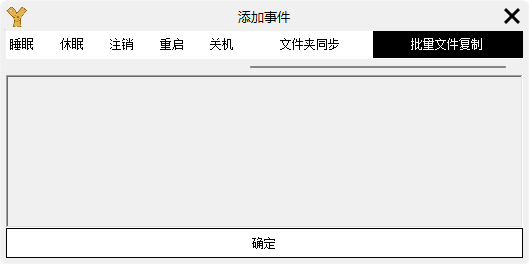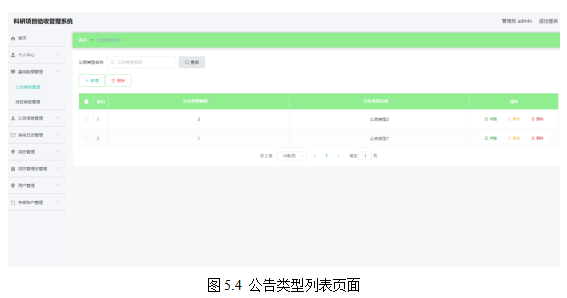文章目录
- 构建Tensorflow.data数据集
- TFRecord数据底层
- 生成TFRecord文件数据
- 读取TFRecord文件数据
- 图像增强
- 数据可视化
构建Tensorflow.data数据集
tf.data.Dataset表示一串元素(element),其中每个元素包含一个或多个Tensor对象。例如:在一个图像流水线(pipeline)中,一个元素可以是单个训练样本,它们带有一个表示图像数据的张量和一个标签组成的数据对(pair)。有两种不同的方式构建一个数据集,具体如下。
- 直接从 Tensor 创建数据集(例如 Dataset.from_tensor_slices());当然 NumPy 也是可以的,TensorFlow 会自动将其转换为 Tensor。
- 通过对一个或多个 tf.data.Dataset 对象的变换(例如 Dataset.batch())来创建数据集。 这两类构建方法又可以进一步分为7种方法。如下所示:
| 数据格式 | 读取方法 | 备注 |
|---|---|---|
| 从NumPy数组读取 | tf.data.Dataset.from_tensor_slices | 当数据较小时 |
| 从Python Generator读取 | tf.data.Dataset.from_generator | |
| 从文本数据读取 | tf.data.TextLineDataset | |
| 从CSV数据读取 | tf.data.experimental.CsvDataset | |
| 从TFRecord data读取 | tf.data.TFRecordDataset | TFRecord 是TensorFlow中自带的,它是一种方便储存比较大的数据集的数据格式(二进制格式),当内存不足时,我们可以将数据集制作成TFRecord格式的再将其解压读取。 |
| 从二进制文件读取数据 | tf.data.FixedLengthRecordDataset | |
| 从文件集中读取数据 | tf.data.Dataset.list_files() | |
| 这里除了TFRecord以外的东西都很好理解,所以这里主要讲一下TFRecord数据集; |
TFRecord 是 TensorFlow 自带的一种数据格式,是一种二进制文件。它是TensorFlow 官方推荐的数据保存格式,其数据的存储、读取操作更加高效。具体来说,TFRecord的优势可概括为:
1)支持多种数据格式;
2)更好的利用内存,方便复制和移动;
3)将二进制数据和标签(label)存储在同一个文件中。
TFRecord 格式文件的存储形式会很合理地帮我们存储数据。TFRecord 内部使用了 Protocol Buffer 二进制数据编码方案,它只占用一个内存块,只需要一次性加载一个二进制文件的方式即可,简单,快速,尤其对大型训练数据很友好。当我们的训练数据量比较大的时候,TFRecord可以将数据分成多个 TFRecord 文件,以提高处理效率。
假设有一万张图像, TFRecord 可以将其保存成 5 个.tfrecords 文件(具体保存成几个文件,要看文件大小),这样我们在读取数据时,只需要进行5 次数据读取。如果把这一万张图像保存为NumPy格式数据,则需要进行10000次数据读取。 我们可以使用tf.data.TFRecordDataset类读取TFRecord文件。
TFRecord数据底层
在数据转换过程中,Example是TFReocrd的核心,TFReocrd包含一系列Example,每个Example可以认为是一个样本。Example是Tensorflow的对象类型,可通过tf.train.example来使用。 特征指的是Example中输入向量的维度,有多少个维度就有多少个特征。
![![[Pasted image 20240507123310.png]]](https://img-blog.csdnimg.cn/direct/53d38f42f74745f5a8696f391540ac6a.png)
TFRecord,Example,features对应关系具体如下:
![![[Pasted image 20240507124103.png]]](https://img-blog.csdnimg.cn/direct/913bbf2efe4346c2b4b223594a3fdc56.png)
生成TFRecord文件数据
这里使用cat-dag数据集,数据下载连接如下:
链接:https://pan.baidu.com/s/1e9skHjPAzy9Bfd5Z7Xl70A?pwd=zynb
提取码:zynb
下载之后解压到当前目录的./data文件夹,然后读取文件位置和标签,最后依次写入TFRecord中
python">import tensorflow as tf
import os## 设置文件位置以及标签
data_dir = "./data/cat-dog"
train_cat_dir = data_dir + '/train/cats/'
train_dog_dir = data_dir + "/train/dogs/"test_cat_dir = data_dir + "/test/cats/"
test_dog_dir = data_dir + "/test/dogs/"train_cat_filenames = [train_cat_dir + filename for filename in os.listdir(train_cat_dir)]
train_dog_filenames = [train_dog_dir + filename for filename in os.listdir(train_dog_dir)]
train_filenames = train_cat_filenames + train_dog_filenames
train_labels = [0]*len(train_cat_filenames) + [1]*len(train_dog_filenames)test_cat_filenames = [test_cat_dir + filename for filename in os.listdir(test_cat_dir)]
test_dog_filenames = [test_dog_dir + filename for filename in os.listdir(test_dog_dir)]
test_filenames = test_cat_filenames + test_dog_filenames
test_labels = [0]*len(test_cat_filenames) + [1]*len(test_dog_filenames)## 创建生成TFRecord数据集函数
def encoder(filenames, labels, tfrecord_file):with tf.io.TFRecordWriter(tfrecord_file) as writer:for filename, label in zip(filenames, labels):with open(filename, 'rb') as f:image = f.read()## 将img,label转化为向量的形式 这里只能是普通的形式,不能np和tf,所以读取图片最好是直接读取字节,虽然np.array(Image.open(filename)) 很快,但是array.tolist() 很慢,这就导致效果很慢,所以这里还是读字节最后再在读取tfrecord数据的时候,使用tf.io.decode_jpeg对图片进行解码。image_feature = tf.train.Feature(bytes_list=tf.train.BytesList(value=[image]))label_feature = tf.train.Feature(int64_list=tf.train.Int64List(value=[label]))## 建立feature字典feature = {'image': image_feature,'label': label_feature}# 通过字典创建example,example对象对label和image数据进行封装example = tf.train.Example(features=tf.train.Features(feature=feature))# 将example序列化并写入字典writer.write(example.SerializeToString())## 创建TFRecord
encoder(train_filenames, train_labels, 'train.tfrecords')
encoder(test_filenames, test_labels, 'test.tfrecords')
这里要注意的是,一共有三种类型,int64,float,bytes,只能是最原始的类型,不能np和tf
python">tf.train.Feature(bytes_list=tf.train.BytesList(value=[*]))
tf.train.Feature(int64_list=tf.train.Int64List(value=[*]))
tf.train.Feature(float_list=tf.train.FloatList(value=[*]))
可以看到当前目录下面有两个tfrecords文件。
读取TFRecord文件数据
python">def decoder(tfrecord_file, is_train_dataset=None):#构建datasetdataset = tf.data.TFRecordDataset(tfrecord_file)#说明特征的描述属性,为解吗每个example使用feature_discription = {'image': tf.io.FixedLenFeature([], tf.string),'label': tf.io.FixedLenFeature([], tf.int64)}def _parse_example(example_string): # 解码每一个example#将文件读入到队列中feature_dic = tf.io.parse_single_example(example_string, feature_discription)feature_dic['image'] = tf.io.decode_jpeg(feature_dic['image'])#对图片进行resize,属于数据处理的操作feature_dic['image'] = tf.image.resize(feature_dic['image'], [256, 256])/255.0return feature_dic['image'], feature_dic['label']batch_size = 4if is_train_dataset is not None:#tf.data.experimental.AUTOTUNE#根据计算机性能进行运算速度的调整dataset = dataset.map(_parse_example).shuffle(buffer_size=2000).batch(batch_size).prefetch(tf.data.experimental.AUTOTUNE)else:dataset = dataset.map(_parse_example)dataset = dataset.batch(batch_size)return datasettrain_data = decoder('train.tfrecords', is_train_dataset=True)
test_data = decoder('test.tfrecords')
最后得到的train_data抽取四个进行展示一下:
python">import matplotlib.pyplot as pltdef plot_img_label(elemtents):imgs, labels = elemtentsnum_imgs = labels.shape[0]for i in range(num_imgs):plt.subplot(1,num_imgs,i+1)plt.axis('off')plt.title(labels[i].numpy())plt.imshow(imgs[i].numpy())plt.show()plot_img_label(train_data.take(1).get_single_element())
![![[Pasted image 20240507134554.png]]](https://img-blog.csdnimg.cn/direct/46f2dc984ab349119426d49de85fce2d.png)
图像增强
python"># 解码图片 转换图片数据类型 调整图片尺寸
image = tf.image.decode_jpeg(image, channels=3)
image = tf.image.convert_image_dtype(image, dtype=tf.float32)
image = tf.image.resize(image, (156, 156))# 对图片进行上下左右随机的翻转,调整明亮度最后旋转90度
images = tf.image.random_flip_left_right(images)
images = tf.image.random_flip_up_down(images)
images = tf.image.random_brightness(images, 1)
images = tf.image.rot90(images, 1)
数据可视化
数据可视化一般来说的库有 matplotlib,tensorboard
更多可视化操作可以看这一个专栏:数据可视化 Python_Bigcrab__的博客-CSDN博客
matplotlib 设置中文
python"># windows
plt.rcParams['font.sans-serif']=['SimHei']
plt.rcParams['axes.unicode_minus'] = False # mac
plt.rcParams['font.sans-serif'] = ['Arial Unicode MS']
plt.rcParams['axes.unicode_minus'] = False
tensorboard
python">logdir = os.path.join("logs", datetime.datetime.now().strftime("%Y%m%d-%H%M%S"))
tensorboard_callback = tf.keras.callbacks.TensorBoard(logdir, histogram_freq=1)model.fit(x=x_train, y=y_train, epochs=5, validation_data=(x_test, y_test), callbacks=[tensorboard_callback])
在Windows的命令行启动Tensorboard 服务,指定日志读写路径,如果是linux环境,请根据实际情况,修改logdir的值。 tensorboard --logdir=“C:\Users\wumg\jupyter-ipynb\tensorflow2-book\char-05\logs”
在 jupyter 中运行下列代码:
python">%load_ext tensorboard%tensorboard --logdir logsfrom tensorboard import notebook
notebook.list() # View open TensorBoard instances
![![[Pasted image 20240507140028.png]]](https://img-blog.csdnimg.cn/direct/7e8ceeccd428467caac1f4362b5f9586.png)




